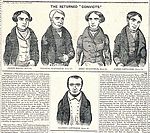 Tolpuddle Martyrs
Tolpuddle Martyrs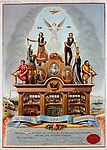 Ammalgamated Society of Engineers, Machinists, Millwrights, Smiths and Pattern Makers
Ammalgamated Society of Engineers, Machinists, Millwrights, Smiths and Pattern Makers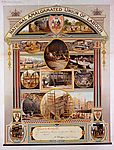 National Ammalgamated Union of Labourers
National Ammalgamated Union of Labourers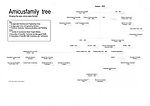 The growth of AMICUS
The growth of AMICUS 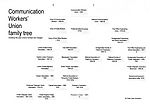 The growth of CWU
The growth of CWU 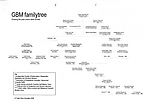 The growth of GMB
The growth of GMB 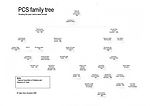 The growth of PCS
The growth of PCS 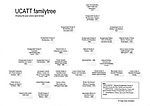 The growth of UCATT
The growth of UCATT 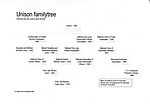 The growth of UNISON
The growth of UNISON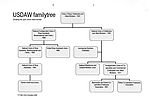 The growth of USDAW
The growth of USDAW

The Industrial Revolution (mid 18th Century - early 20th Century) changed the working climate and culture of Britain. The mechanisation of industries and factories greatly altered society. It brought workers together, housing needs changed and working conditions were different. It is at about this time that groups of workers started to organise themselves into Societies, paying subscriptions and holding meetings to support each other in times of need.
1799 – 1800 Combination Act Reform Laws forbidding groups of people meeting for the purpose of political reform. Pressure was put on the government by employers, for fear of political unrest similar to that seen in France.
1819 Peterloo Massacre. 11 people were killed and 400 injured when the authorities attempted to disperse a 50,000 strong crowd at the Manchester Patriotic Union Society meeting, called to discuss parliamentary reform.
1819 In response to Peterloo, the Tory government introduced the Six Acts. These included; “taxes on knowledge”, that is, heavy taxes on publications to combat the popularity of ‘radical’ newspapers, and they limited the size and purpose of meetings.
1825 Combination Act narrowly defined the rights of trade unions and anything outside of the Act was liable to prosecution.
1833 Grand National Consolidated Trade Unions was formed. It attempted to bring together and organise societies nationally, to increase strength and bargaining power. This enabled unskilled labourers to join a “general” union.
1834 Tolpuddle Trials. Six Dorset farm labourers, who were paid a very low wage, and lived in poverty, joined a union to give themselves more power. They were arrested on charges of making illegal oaths and were transported to Australia “as an example to others.” The men had become heroes to the working masses, and following mass protests, the men’s sentences were revoked, and they returned from Australia.
1850 Union membership stood at 100,000. The country had settled into steady economic and industrial growth
1868 Trades Union Congress – Trades Councils from across the country came together to form the TUC.
1871 Criminal law Amendment Act. Liberal Government criminalises picketing.
1871 Trade Union Act recognises and protects trade unions as legal corporations.
1874 Women’s Protective and Provident League was established. (Later became the Women's Trade Union League, the women's equivalent to the TUC.)
1874 The Factory Act limited the working day to 10 hours.
1875 Conspiracy and Protection of Property Act. The Tory Government decriminalises picketing.
1886 Sheffield outrages. Sheffield unionists were accused of using arson and murder to intimidate non-unionists. As a result, a Royal Commission was set up to investigate trade unions.
1888 The Matchgirls’ Strike
1888 Gas Workers’ Strike due to workers being laid off, leading to the setting up of National Union of Gas Workers and General Labourers. Within 5 weeks the company had agreed to reduce the working day to 8 hours. Another shift had to be created, thereby creating more jobs for the unemployed.
1889 Dockers’ strike led by the Tea Operatives and General Labourers’ Association (inspired by the Matchgirls’ strike) over pay and conditions.
1890 May Day demonstration for 8 hour day
1895 A change to TUC standing orders introduced the block vote.
1901 Taff Vale judgement – Employer successfully sued Union for £23,000 loss of earnings
1906 National Federation of Women Workers was formed. (Amalgamated with the National Union of General Workers in 1921)
1906 Trades Dispute Act – removed trade union liability
1914 Triple Alliance – National Union Railwaymen, National Union of Mineworkers, National Transport Workers’ Federation.
1914 An Industrial truce was called for the duration of WW1.
1922 Transport and General Workers' Union – united 50 organisations, making it the world’s largest trade union.
1925 Mine owners announced a reduction in miners' wages. Despite a temporary reprieve, the subsequent cut in wages led to the 1926 General Strike.
Following the decline in manufacturing in Britain after WW1, there was mass unemployment. This led to trade union membership slumping in the 1920s. As industry recovered in the late 1930s, trade union membership once again began to rise.
Rollover the captions in the box to see the available images in thumbnail format, click the caption to see the full-size image
| Reference: | 695 |
| Keywords: | |
| Archive Ref: | |
| Updated: | Wed 9 Jul 2008 - 12 |
| Interpretation written by | Jenny Ermoyenous |
| Author's organisation | Curatorial |
| Organisation's website |